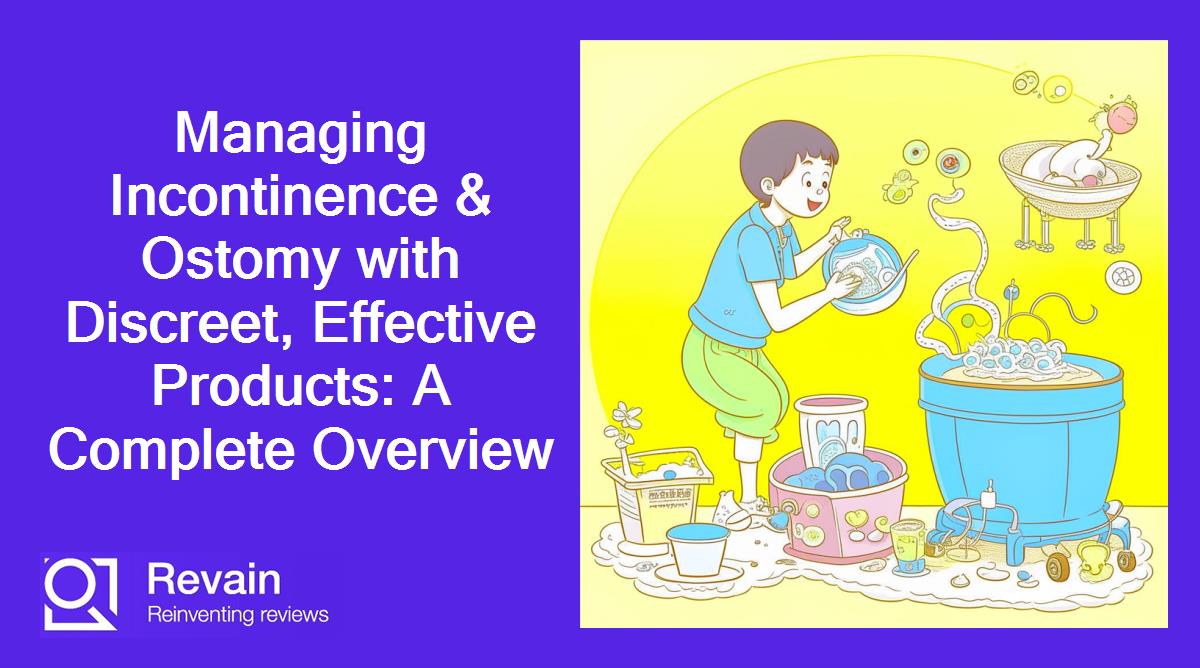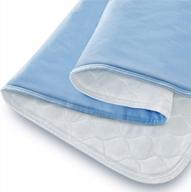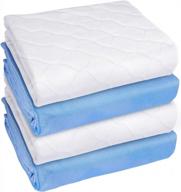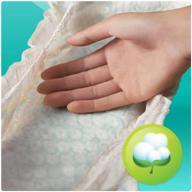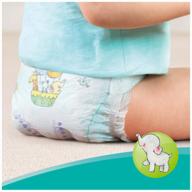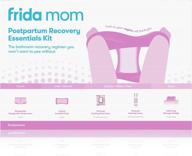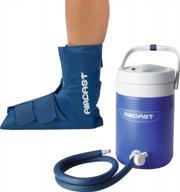Top products in 💪🏼 Incontinence & Ostomy
The Struggles of Managing Incontinence
Incontinence, or the inability to control one's bladder and bowels, can be an embarrassing and difficult condition to live with. However, with the right products and lifestyle adjustments, it is possible to manage incontinence and live a full, active life.
Causes of Incontinence
There are several potential causes of incontinence:
- Pregnancy and childbirth
- Menopause
- Enlarged prostate in men
- Chronic diseases like diabetes, multiple sclerosis, and Parkinson's
- Nerve damage from surgery, injury, or stroke
- Weak pelvic floor muscles
Physical and Emotional Toll
Living with incontinence can take a major toll both physically and emotionally. Sufferers often experience:
- Skin irritation, rashes, and infections from leakage
- Limitations on travel, exercise, and social life
- Anxiety about odor and public accidents
- Depression and reduced self-esteem
The fear of embarrassment from leakage and odor can lead people to isolate themselves. But there are ways to manage symptoms and prevent accidents.
Lifestyle Changes and Products
Making certain lifestyle adjustments coupled with using the right products can greatly improve quality of life:
- Drinking less caffeine and avoiding bladder irritants
- Doing Kegel exercises to strengthen pelvic floor
- Following a scheduled bathroom routine
- Wearing pads, guards, or adult diapers
- Using skin care products to prevent rashes and infection
- Taking medication to treat overactive bladder
Finding the right absorbent pads or diapers is essential. Products should fit comfortably and securely while allowing air to circulate. High quality brands like Depend and Tena are reliable options.
Another interesting products
Seeking Professional Help
If lifestyle changes don't adequately manage symptoms, there are medical solutions that can help:
- Medications to relax bladder muscles or decrease urine production
- Pessaries to support weakened pelvic muscles
- Electrical stimulation to strengthen pelvic floor
- Surgery to correct anatomical issues causing leakage
Seeing a doctor to discover the underlying cause of incontinence is recommended. With professional guidance and the right products, it is possible to find relief.
Living Your Best Life
Incontinence should not prevent you from enjoying everyday activities. With a good routine and effective products, you can manage symptoms and reclaim your freedom and confidence. Don't hesitate to explore medical options if problems persist. You deserve to live fully and without limits.
Similar products
Finding the Right Products for Your Needs
When living with incontinence or using ostomy pouches, finding the right products can make all the difference in managing symptoms comfortably and discreetly. With so many brands and options on the market, it helps to understand the different types available.
Absorbent Pads
Pads sit in underwear to absorb urine leaks. Some features to consider when selecting pads include:
- Absorbency level - light, moderate, heavy, or overnight
- Size - regular, long, or extra long
- Fastening method - adhesive strips or snug fit
- Odor control
- Skin friendliness
Adult Diapers
Diapers are more substantial than pads and don't require additional underwear. Here's what to look for:
- Fit - measure your waist and hips
- Absorbency - heavy wetters need higher capacity
- Style - pull-on, tab-fastening, or refastenable
- Discreet appearance
- Breathability and leakage guards
Protective Underwear
Reusable cloth underwear with waterproof lining provides an eco-friendly option:
- Coverage - high-waisted styles recommended
- Easy laundering - machine wash and dry
- Good fit to prevent leaks
- Use with washable pads or liners
Ostomy Pouches
Pouches adhere to the skin to collect ostomy output. Features to consider:
- Skin friendliness - builtin cushions to prevent irritation
- Odor barriers
- Drainable or closed-end pouches
- Flexibility - accommodates body movement
- Low profile - hides under clothing
Sample products to find your ideal fit and level of protection. Read reviews and ask your doctor or pharmacist for recommendations. With the right products, you can manage symptoms confidently.
Tips for Choosing the Best Adult Diapers
Finding the right adult diapers can make managing incontinence much easier. With the wide variety of brands and styles available, it helps to consider a few key factors to choose the most effective option for your needs.
Assess Your Level of Incontinence
Diapers come in different absorbency levels:
- Light absorbency - minor leakage
- Moderate absorbency - frequent minor leaks
- Heavy absorbency - severe incontinence
- Overnight absorbency - prolonged wear
Consider how often you experience leaks and how much bladder or bowel control you have throughout the day and night. This will determine the absorbency required.
Consider Sizing
Diapers come in a range of sizes to fit different bodies:
- Measure your waist and hip circumference
- Consult sizing charts for weight ranges
- Try sample sizes to ensure a snug, gap-free fit
A proper fit prevents leaks and discomfort. Take into account if you need extra coverage for overnight use.
Compare Fastening Styles
Different fastening types include:
- Tab-fastened - adhesive tabs secure diaper in place
- Pull-on - elastic waist; no fasteners needed
- Refastenable - can open and close tabs for easy changes
Consider dexterity and ease of changing when deciding on fasteners.
Assess Special Features
Added features to look for include:
- Wetness indicator that changes color
- Odor control
- Breathable outer layer
- Leak guards or standing inner cuffs
- Lotion to prevent skin irritation
Extra features can make diapers more comfortable and effective for your needs.
Take your time making the best selection. A diaper that fits well and absorbs properly will provide security and confidence.
Overcoming Embarrassment and Stigma
Living with incontinence or using ostomy products can be difficult in a society that stigmatizes these conditions. The fear of embarrassment can prevent people from seeking help and living their lives fully. However, with the right mindset and support, the shame can be overcome.
Seeking Understanding
It starts with recognizing incontinence and ostomies as medical conditions that require treatment and compassion. Speaking to loved ones about your challenges can build empathy and understanding. Support groups can also provide encouragement by connecting you with others who share similar experiences.
Educating Others
Many peoplereact negatively out of lack of awareness. Kindly explaining your condition and needs to friends, family and colleagues can help gain acceptance and accommodate your situation. This education combats stigma stemming from ignorance.
Discreet Products
Today's incontinence and ostomy products are designed for subtlety and comfort:
- Thin, body-contouring diapers and pads
- Odor eliminating pouches and materials
- Noiseless tabs and fasteners
- Skin-tone covers to hide appliances
Choose options that allow you to feel confident and avoid noticeable bulges and sounds.
Preparing For Accidents
Carrying extra supplies and a change of clothes can minimize embarrassment if leaks occur. Having a plan helps reduce panic and anxiety if an ostomy bag needs emptying.
Professional Help
Doctors, nurses and counselors have seen it all before. Speaking openly to experts provides solutions without shame. Ongoing care is key to overcoming bladder or bowel issues.
Focusing On Your Worth
Medical conditions do not define anyone's value as a person. Refocusing on your talents and strengths rather than perceived flaws promotes self-esteem. Supportive inner dialogue is key.
With understanding, discretion and preparation, incontinence and ostomies don't need to limit a fulfilling life. The stigma stems from misinformation, not anything about your character. Stay positive and true to who you are.
Reviews of the Top-Rated Brands
When choosing incontinence and ostomy products, quality makes all the difference in managing symptoms comfortably and securely. These top brands earn high marks for effectiveness, reliability and discreetness.
Depend
The Depend line of adult diapers and guards earns rave reviews for:
- Soft, breathable fabrics
- Customizable absorbency and sizing
- Odor minimizing technology
- Variety of styles including tabs, pull-ons and liners
- Discreet appearance
Their Silhouette and Real Fit lines provide a body-hugging, customized fit for confidence and comfort day or night.
Tena
Tena offers a full range of leak-proof underwear, pads and stretchable briefs. Users praise:
- Secure leg cuffs and waistbands
- Skin-soothing lotions and aloe
- Odor protection
- The choice between reusable cloth and disposable options
- A variety of patterns and colors
Their Serenity pad line absorbs leaks without bulk, perfect for subtlety and mobility.
ConvaTec
For ostomy needs, ConvaTec is a top choice for:
- Both one and two-piece pouch systems
- Flat and convex skin barriers to prevent leaks
- Drainable and closed-end pouches
- Infused charcoal filters to absorb odors
- Balanced adhesive for a customized fit
ConvaTec pouches move with the body discreetly and comfortably.
Poise
Poise impresses customers with their:
- Ultra thin pads that prevent bulges
- Absorbing polymer lock technology
- Panty liners, pads and guards for flexible protection
- No slip grip to stay put
- Stylish designs and packaging
Poise pads allow odor-free, worry-free freedom of movement.
Trying samples first is recommended to find your perfect brand match. With quality products, incontinence and ostomies don't have to get in the way of normal routines.
What is the use of Amazon Prime for a regular buyer of "Incontinence & Ostomy"?
For those who rely on incontinence supplies and ostomy products, Amazon Prime can make regular purchases more convenient and affordable. Here are some of the key benefits Prime offers:
Free Two-Day Shipping
Prime members get free two-day shipping on most items. This ensures you get fresh supplies quickly before running out. No more last minute emergencies if your shipment of adult diapers or ostomy pouches is late - Prime's quick delivery is reliable.
Discreet Packaging
Amazon ships with plain brown boxes and neutral labels to maintain privacy. This is ideal for having sensitive personal care items conveniently delivered to your door without embarrassment.
Lower Costs
Prime customers save up to 20% off diapers and incontinence products from major brands like Depends and Tena. These savings really add up for frequent buyers. Prime's discounts help stretch budgets on recurring essential purchases.
Streamlined Reordering
With Prime's "Subscribe & Save" option, you can set up automatic, recurring deliveries of products you use regularly. This ensures you never run out without the hassle of manually reordering each month.
Avoiding Urgency Fees
Standard shipping fees are waived for Prime members, saving you money. And you avoid the steep last minute express delivery fees if you ever do run low unexpectedly before your next scheduled shipment.
For those relying on incontinence and ostomy products, the conveniences of Prime can enhance comfort, discretion and savings. The program pays for itself with regular use, giving you one less thing to worry about.
What Are The Most Common Types Of Incontinence Products?
There are several types of incontinence products available to help manage urinary and bowel incontinence. Here are the most common types:
For urinary incontinence:
For bowel incontinence:
When choosing the right incontinence product, it is important to consider factors such as the level of incontinence, comfort, cost, durability, ease of use, and mobility. It is also recommended to consult with a healthcare professional to determine the best product for your specific needs.
What Are The Differences Between Disposable And Reusable Incontinence Products?
Disposable and reusable incontinence products have their own unique features and benefits. Here are the differences between the two:
Disposable Incontinence Products:
Reusable Incontinence Products:
When choosing between disposable and reusable incontinence products, it is important to consider factors such as the level of incontinence, comfort, cost, durability, ease of use, and mobility. It is also recommended to consult with a healthcare professional to determine the best product for your specific needs.
What Are The Environmental Impacts Of Disposable Incontinence Products?
Disposable incontinence products have a significant environmental impact due to their non-biodegradable materials and the amount of waste they generate. Here are some of the environmental impacts of disposable incontinence products:
In summary, disposable incontinence products have a significant environmental impact due to their non-biodegradable materials and the amount of waste they generate. It is important to consider the environmental impact of incontinence products when choosing between disposable and reusable options.






